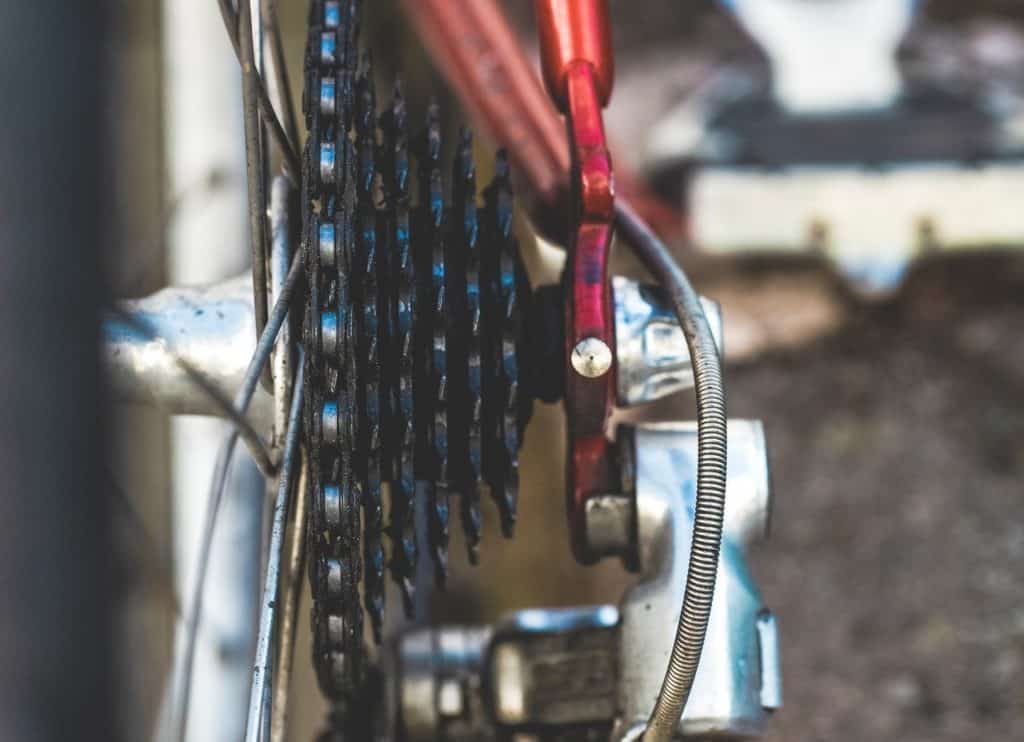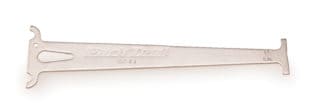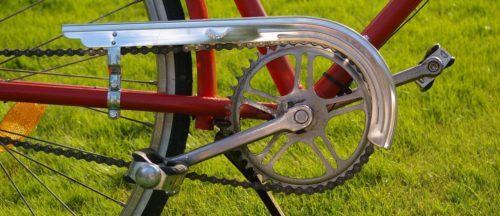This post may contain affiliate links. If you click an affiliate link and make a purchase, I may earn a commission. Also, as an Amazon Associate, I earn from qualifying purchases.--
One of the most important parts of a bicycle is the chain. There will be a point in time when a chain will break or become worn out and must be replaced.
Chains don’t last forever, and you’ll need to go to the local bike shop to get a new one. Are you in this situation and clueless about how much a bike chain costs? Well, you’ve arrived at the right article!
So how much is a bike chain? A bike chain costs anywhere from $10 to $90 depending on the brand, quality, and type of bike you’re buying it for. Basic, cheaper bikes that need a simple chain will be closer to $10. Higher-quality chains that are durable and made for top-notch road bikes will cost $60 to $90.
Professional cyclists need to have the best and most innovative equipment to compete, and so they’ll ride with the most expensive and best chains. For the rest of us, a reasonably priced chain will work just fine.
The higher quality chains are thinner, last longer, resist corrosion, and are lighter. Unless you’re going for a speed record a moderately priced chain is trustworthy and will last for many miles.
Personally, I buy chains that are in the $30 range, and they last over 2,000 miles and work well.
In the remainder of this article I will answer,
- How to know when to replace your bike chain
- What it costs to have a bike shop replace a chain
- How to change a bike chain yourself
- Choosing the right chain for your bicycle

When is it Time to Replace the Chain?
- The Chain Physically Snaps – It isn’t common, but it does happen from time to time that a bike chain breaks. Chains are made of links held together by little pins. Usually, a chain breaks when a cyclist is pedaling hard while at the same time shifting their front derailleur. The force is too much and causes the chain to break. This is the most common reason, but it could also happen if the chain gets twisted or an object gets lodged into it. If your chain snaps, it is possible to fix it (see this helpful article for chain repair) but in most cases you should buy a new chain. Typically when a chain breaks it means that it was at the end of its life anyway.
- The Bike Chain is Worn Out – The more miles you put on your bicycle, the more your chain will wear out. As chains are used they will stretch out. What happens is that the pins that hold the links together wear down over time, which in turn causes your chain’s length to grow. Riding on a stretched chain will increase the wear on your bike’s cassette and chainrings, and the bike won’t be able to shift as efficiently and smoothly as it once did. In addition, if you inspect your bicycle chain and notice a crack or strange deformity then it is time to replace it.
The Easy Method to Seeing if Your Chain is Stretched

Purchase the Park Tool Chain Checker on Amazon. There are other methods to approximate when a chain is stretched and needs to be replaced, but this product is cheap and does the job accurately in 15 seconds.
All you need to do is hook one end into the chain, and if the other end fits and is able to insert into a chain link it is time to replace your bike chain.
This shows that your chain has stretched out too much. If reading this was confusing, you can watch how simple to use this tool is by watching this YouTube video here.
How many miles does a bike chain last?
If you read other articles about bike chains (like me, I’m a bike nerd!) then you’ll notice that they advise replacing the chain anywhere from 750 miles to 2,000 miles to 5,000 miles.
Why the wide variance between answers?
The real answer is a bike chain will last for different mileage for every cyclist. It’s not possible to say that a bike chain will last for X miles, because of the many factors that lead to chain wear.
Factors that lead to chain wear include: a cyclist’s shifting patterns, the condition of the drivetrain, chain maintenance, the weather conditions during use, rider’s weight, and more. With this said, for a bicycle chain to last 5,000 miles is a feat. Most chains wear out long before the 5,000-mile mark.
I prefer to inspect and check my bike chain after the first 500 miles, and then every 250 miles afterward. Like I said earlier, if you’ve got the tool it takes longer to get the tool than it does to check the chain’s wear. It is important to keep an eye on your chain, because if a chain is too worn it can wear out the other parts of your bike.
You don’t want to have to pay for a new cassette or for chainrings early, because you left a chain too long on your bike. As soon as you notice that your chain is done, switch it out to keep the rest of your bike’s part from wearing out too quickly.

How Much Does A Chain Replacement Cost?
If you don’t want to replace the chain yourself you can take it to your local bike shop to get installed.
I checked prices for a chain installation from multiple bike shops across the United States and the general cost for a chain installation ranges from $10 to $20 for labor.
This cost doesn’t include the chain itself. As mentioned at the start of this article, the cost of a bike chain ranges from $10 to $90 depending on the quality.
How Much Does it Cost to Replace Bike Chain Yourself?
The first time you decide to replace a bike chain you’ll need to buy either the pliers or chain tool to do so. These tools range from $15 to $40, but will last for the rest of your life. The tool you need will depend on what type of chain you have.
Most BMX bikes and single speed bikes use a chain with a master link.
A master link (also known as a quick-release link) makes it easy to connect and disconnect a chain with pliers.
You can find the master link on a bike by slowly inspecting your chain and looking for the single link that is wider than the others. This wider link is the master link. If you have a chain with a master link you’ll need the Master Link Pliers listed below.
If you are riding a bicycle that has a derailleur it’s very likely that you don’t have a chain with a master link. Your chain utilizes connecting rivets. You will need to use the basic chain tool to remove and install a new chain.
The only other purchase you’ll need is bike lubricant which runs for around $10 bucks.
So for the very first time you replace a bike chain, you’ll be spending anywhere from $25 to $50 PLUS the cost of the bike chain. After the initial tool purchase, you’ll only need to pay for the chain.
Replacing a bike chain is a fairly easy task. I’m not the most handy with tools and even I was able to do it!
The first time it took me about 30 minutes to replace my chain, because I watched the YouTube video below and followed it step by step to make sure I knew what I was doing. The second time it took only about 20 minutes to replace the bike chain, because I knew what I was doing.
Unless you’ve got a burning desire to support your local bike shop by having them do it, you can save $10-20 by doing this simple maintenance repair yourself once you own the right tool.
Video on How to Change a Bicycle Chain
I have included the video below that will walk you through exactly how to replace a bike chain.
Make sure you have all the materials listed above before starting your chain replacement! You don’t need to have a repair stand, but I recently got one and it did make this repair easier. You can see photos of and read my review of the Bike Hand Stand here.
All the supplies you’ll need as seen in the video below.
- Master Link Pliers (MLP- 1-2) for master link chains (see on Amazon)
- Chain Tool for connecting rivet chains (see price on Amazon)
- Chain Lubricant
- The new Bike Chain
- Sharpie Marker
Choosing the Right Bike Chain
The good news is that bike chains are ALWAYS longer than you need them to be. You don’t need to worry about buying a chain that is too short.
During the installation, the mechanic (or you) will need to remove links to get it to the proper size. You can see how to do this in the video above.
So how do you know what bike chain to get? It depends on how many gears you have on the rear wheel. Count the cogs, and you’ll be able to figure out exactly what chain to buy.
If you have a 6, 7, or 8 gears in the back you’ll need to buy a 7/8 speed chain. For a single-speed or child’s bike, you will need to purchase a single-speed chain. If you’ve got 11 gears then an 11-speed chain. Very simple.
As for the differences in prices, the better (and usually more expensive) chains are more durable, lighter, and will shift better. Personally, I skip the cheap chains and go for a mid-price chain. I have used SRAM and Shimano chains and have been happy with both of them. SRAM chains worked great on my road bike that has a Shimano 105 groupset on it.
The one exception to buying chains is if you have Campagnolo equipment on your bike then you need to stay with Campagnolo chains.

How Can I Make a Bike Chain Last Longer?
The best thing you can do to make a bicycle chain last longer is to keep it clean and lubricated. If you’re riding your bike in a place where sand and dirt can easily get into your drivetrain you need to routinely wipe it down, use degreaser, and bike lube.
Make sure to use wet lube if you are riding in a wet environment to prevent rust from getting on your chain.
The better you take care and maintain your chain the more miles you will get out of it. A rusty, dirty, or sandy chain will wear out very quickly.
Related Questions
Do I need to change the cassette with a new chain? Bike chains wear out much faster than a cassette, so you don’t need to replace the cassette every time you get a new chain.
You can usually go through a few chains on a cassette before it’s time for the cassette to be replaced. When your cassette is worn out (the chain is skipping, and the teeth on the cog look like shark fins) then you need to replace the cassette.
While you don’t need to replace the cassette when you get a new chain, it is recommended that you replace your bike chain when you replace your cassette.
The reason is that a worn-out chain can wear out a new cassette quickly. Might as well pair a brand-new chain with a fresh cassette to make sure you can get the most life out of the cassette. This will save you money in the long run, because cassettes are significantly more expensive to replace compared to chains.
What is the best bike chain? There are a lot of great bike chain brands out there. My favorite is SRAM chains. I have also had a good experience with Shimano chains. Some cyclists swear by KMC, and I have heard good things about Connex too.
Talk with your bike shop and give different chains a try. Most people find one brand of chain they like and stick with that.
What about belt drives for a bike? Are they worth it? Belt drives are strong, easy to clean, lightweight, quieter, and won’t rust. You will never need to lubricate a belt drive, and because of the way they work they can last twice as long as a bike chain.
If you’re a bike commuter belt drives may be perfect for you. You won’t need to worry about getting grease on your calf, and they basically require no maintenance. If anything you might have to spritz it with water occasionally to wipe some dirt or mud off it.
A friend owns a belt-driven bike as his commuter and he thinks it is worth it, because of the convenience.
The downside of belt-driven bikes is that they cost more money and only work with single-cog setups. You need to either be riding a single-speed or a bike with an internal gear hub.
Some people argue that it’s hard to find a replacement belt in the United States, but this has changed even in the recent year. More and more bike commuters are choosing to ride belt-driven bikes and so local bike shops are carrying belts to sell and replace.
